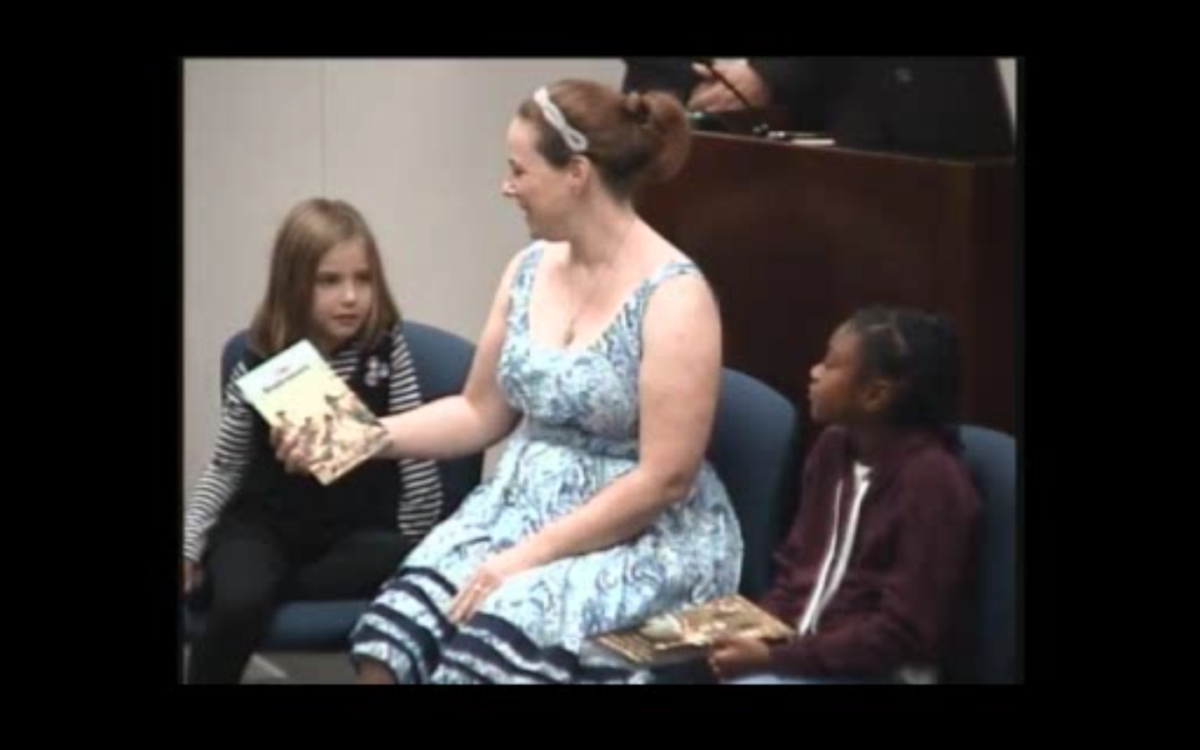Teaching shifts from comprehension to analysis

Madison Elementary Teacher Melissa Smith, center, asks reading comprehension questions to students Ava and Samira during an RBUSD School Board. Courtesy RBUSD
Redondo Beach schools are shifting from traditional forms of literary comprehension toward deeper literary analysis, even in younger grades, according to a presentation before the Redondo Beach Unified School Board.
“Back in the ‘80s, the teacher taught whatever the district thought, and probably whatever the textbook said,” said Madison Elementary Principal Drew Gamut. “But things have changed. We teach state standards, but we’re going into more depth.”
According to Melissa Smith, schools focused on teaching students how to decode words, sounding them out to say them appropriately. Students were then asked comprehension questions about characters, plot, and setting. But with a shift toward Common Core comes a shift in the types of stories being read. Sixty percent of books now being taught are non-fiction, while 40 percent are fiction. Analysis has now come to fore in teaching literacy.
“We’re gearing toward a deep understanding of what’s going on in the story, making predictions and analyzing,” Smith said. “Decoding is still a part of that, but I can decode in Arabic; that doesn’t mean I know what I’m saying.”
Students are taught about building information and applying it, comparing it with what they already know.
For an example, Smith asked a young Madison student, Samira, from Madison’s first-grade classes, why author Julie Winterbottom named her book “A Dragon on the Roof: The Surprising Architecture of Antoni Gaudi.”
“It’s about architecture that is surprising and beautiful — it’s cool and fun,” Samira said.
“We want students to dig in, to understand what the author is doing so they can make the same steps when they become writers themselves,” Smith said.
The classes will use mentor texts for guided reading, to tell students what to look for and how to analyze a particular story, Smith said, giving students the tools to talk about different parts of stories after finishing the text.
“The goal is to make them better writers and to see themselves as writers, learning different moves to make their writing stronger and to communicate stronger,” Smith said.
“In terms of thought process, it’s phenomenal what five-year-olds and six-year-olds will talk about when it comes to literature, feelings, and thoughts on things,” Gamut said.

